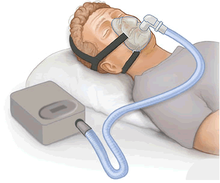Dental Monthly
 One sheep. Two sheep. Three sheep…. Still not sleeping. Better call the Dentist tomorrow!!!
One sheep. Two sheep. Three sheep…. Still not sleeping. Better call the Dentist tomorrow!!!
Yes, the Dentist, because we also help those who suffer from sleep disorders that are accompanied by SNORING!!
Some questions:
>Do you wake up tired and cannot really concentrate at work?
>Does your child snore while sleeping? Do you know what effects that could have on behaviour and learning capacity?
>What are the health risks of reduced oxygen flow during sleep?
>What is Obstructive Sleep Apnea Syndrome?
Some facts:
>In millions of bedrooms snoring is a chronic problem. In many cases it causes tension within relationships, chronic fatigue, and even depression.
>Dutch research has found that we are capable of producing sound pitches of up to 90 decibels while snoring, comparable with the blast of an F16 flying at 1500ft.
>It is understandable that a partner trying to sleep next to a chronic snorer might become depressed, especially given that the person snoring often wakes up due to the excessive noise they are making, gasping for air. When people sleeping superficially due to micro-awakenings during the night, both the snorer and their partner risk becoming depressed, and people even end up divorcing or breaking up due to a lack of sleep.
>It was found that snoring costs up to 3 weeks of sleep a year.
Who snores:
>Snoring is a common problem and afflicts 1 out of 5 men and 1 out of 7 women.
>Moreover, 1 out of 10 children snores, and for this reason they may be more emotional or hyperactive and might have concentration problems.
>During sleep, as the muscles of your neck and throat are not in tension and the tongue lowers towards the throat, patients with a drawn back mandible, obstructed nose cavities, or those who are overweight are more likely to snore.
>Heavy smokers are also inclined to snore. Tobacco itself irritates the airways and diminishes breathing capacity.
>Snoring can happen occasionally due to the common cold or a sore throat.
>In particular, after abundant eating and/or drinking the muscles are excessively relaxed and collapse in the throat during sleep. The resulting noise caused by the restriction of the airways between the nose and the vocal cords increases the decibels produced even more.
What are the risks:
The lack of air may also cause serious health problems. So, let’s talk about Obstructive Sleep Apnea Syndrome.
The brain reacts to a reduced oxygen supply and wakes the snorer up with a reflex that activates the neck and throat muscles, removing with a deep breath the soft tissues that obstruct the throat and gasping for air: the classical snoring explosion.
As with every reflex, a person can and will get used to suppressing it by resisting the urge to wake up, and the apnea or no-oxygen periods will become longer and longer. The lack of oxygen in the brain will become critical, especially when using sleeping pills, which are often taken to resolve the inability to sleep deeply.
The complete obstruction of the airways, called Obstructive Sleep Apnea Syndrome (OSAS), is accompanied by snoring and describes the condition of the brain getting used to an increasingly reduced oxygen supply, which is a dangerous risk factor for a cerebral ictus and cardiovascular events.
Snorers may wake up with headaches and chronic tiredness, but they get used to it and ignore their condition.
Solutions:
A/Surgical approach:
Barbed snore surgery or uvulopharyngopalatoplasty, which is an invasive and painful treatment to liberate the airways surgically by laser for those who have tried everything.

B/Assisted breathing device
The CPAP ventilation machine, for example, resolves OSAS and snoring problems. Its disadvantage is that the pressure generator, tube and mask take up space next to your bed, so it is cumbersome and inconvenient in terms of use and costs.
![]()
C/Mandibular advancement device
At Dental Clinic Studio Moll we have had great success providing snorers with a simple custom-fitted device to wear, similar to a night guard. The comfortable mouth retainer will push your lower jaw forward and will gently move your tongue and soft tissues away from obstructing the airways.
There will be no more apnea or gasping for air. One can breathe comfortably, and most of all silently.
It is certainly the top solution for children and young adults, and it is the least invasive and best solution to try out before any invasive surgery or buying expensive breathing equipment.
For any questions you can contact Studio Moll
whatsapp: 331-6368628, or tel: 055-755347
For more inforomation, look up Studio Moll’s You Tube channel and here too.
By Dr. Elena Speranza Moll
Studio Moll
Via Amilcare Ponchielli 21B, 50018 Scandicci –Firenze
Tel: 055-755347
WhatsApp: 331-6362682
Follow me on Youtube

